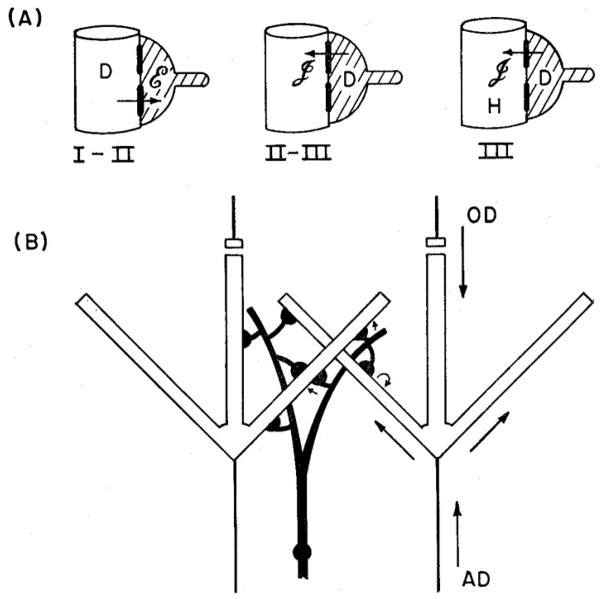Fig. 1.
Model of dendrodendritic interactions between mitral and granule cells in the mammalian olfactory bulb, based on experimental evidence and predictions from computational modeling. A. Sequence of time periods I-III is shown after antidromic invasion of mitral cells. In time period I-II, a mitral cell dendrite (open profile) is depolarized (D) by invading action potential from the soma, activating excitatory (E) synapse onto granule cell dendrite (shaded). In time period II-III, the depolarized (D) spine activates an inhibitory (I) synapse back onto the mitral cell dendrite. This action continues into period III. B. Diagram showing how antidromic (AD) invasion of a mitral cell leads to lateral inhibition of a neighboring mitral cell through electrotonic spread of the granule cell depolarization within the granule cell dendritie tree. Orthodromic (OD) activation from the glomeruli through the primary dendrite leads to similar activation of the lateral dendrites and consequent feedback and lateral inhibition. From (6)

